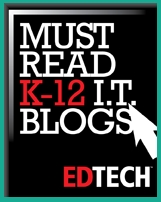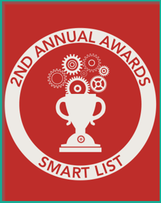
There is also a lot of talk about several other ‘new’ trends in education, which often come across as rather gimmicky and overhyped. In this post we'll cover some of these new fads our modern system.
- Home schooling - Perhaps not a huge trend as yet, but it is picking up in several communities. We are not, in any way, suggesting that home tutors are inferior/less qualified than those associated with reputed learning institutions. However, homeschooling does come with one major disadvantage - it does not instill that basic sense of discipline and self-conduct that is necessary in a proper classroom. That, in turn, leads to poor task-management, more procrastination (simply because there is more time), and probably, lower marks. What’s more - a child’s social skills take a hit too, when (s)he is not allowed to freely mingle with his/her peers.
- Use of technology - First, a clarification is required. The evolution of education technology - thanks to the rapidly increasing popularity of mobile app development and customized software programs - has been nothing but a boon for students. Unfortunately, many teachers and parents tend to rely too much on such fancy ed-tech gadgets to serve as perfect substitutes of that much-necessary human touch in education. After all, a kid on his/her own, can learn only so much from reading a website, watching a video, or tapping on a mobile application. Education technology is not a fad in the strictest sense of the word - but it is being given more responsibility than it can handle. Inanimate objects cannot be teachers!
- Bring Your Own Device - It has a fancy abbreviation (BYOD) - and even kindergartens are beginning to see this trend. At a learning center (whatever level it might be), students should be allowed to use the available resources there, rather than having to drag along their own tablets, smartphones and laptops with them. There is also the risk of viruses and malware spreading from the device of one pupil to those of others - corrupting valuable e-texts and reference materials. BYOD also poses data security risks, particularly in campuses with wi-fi coverage. It’s not possible to always monitor which websites or information each student is accessing at any time.
- Clamour for subject-specific learning aids - It would be great if there were separate ed-tech tools for each of the science subjects. Students would no longer have to log on to a general web learning resource, for instance, and waste valuable time searching for the references they require. However, most language-based subjects do not require such artificial learning aides. Maybe at an elementary level, voice-based web tools and iPhone apps for kids might be of help. At later stages though, for learning the correct pronunciations, scansions, rhetorics, prosody and such stuff - a knowledgeable human teacher is what’s required. No wonder academicians from these fields of study are less interested in the use of technology than their counterparts from the world of science.
- Digital diaries - This is a classic case of creative destruction. Earlier on, the simple (and healthy) practice of diary-writing gave way to blogging on the internet - and now, as an even more convenient shortcut, digital recording diaries have arrived. Whatever happens during an average day in the life of a young child, (s)he can simply share the details with this mechanical ‘friend’. Creativity and the scope to really express oneself (which is a high-point of both manual diary-writing as well as casual blogging) goes for a toss as a result of this. Use of such diaries is virtually encouraging children to become greater introverts too. Hopefully, it won’t be long before the ill-effects of talking to a gadget, instead of a human being, is realized. Voice recorders are necessary for professional purposes, but as an everyday companion of kids? Far from it!
- One-on-one education - One of the biggest misnomers in the field of modern-day education. It’s a perfectly good idea to take individual care of each of the students’ requirements - and it’s completely another thing to try to assign one teacher for every learner. This is, in essence, a wastage of the available teaching resources at hand - since a single qualified teacher is perfectly capable to take care of a moderate-sized classroom (say, 20-30 kids) without any problems whatsoever. In any case, there is a shortage of good teachers, particularly at the junior level. It makes no sense to make the ones who are available to serve as personal caretakers to one child each.
- Equal distribution of technology - There will soon come a time when everyone will realize that completely uniform availability of education technology resources across the globe is simply not a feasible goal. Disparities are, and will continue to be, present between different communities - and there will remain separate groups of ‘have’-s and ‘have not’-s among students from different geographical/social sectors. The focus should be on minimizing the gaps as much as possible, instead of gunning for complete eradication of such inequalities. Let’s be frank - even if students from developing communities are provided free apps for kids, would they have tech-savvy instructors to help them learn how to use the apps? The answer is, in most cases, "no." The additional costs of trying to bring all the students of the world on an absolutely equal footing would also be huge. Let’s just try to help kids make the best use of their situations, rather than making futile attempts to alter the circumstances themselves.
- Flipped classrooms - Kid A has the resources to sign up for online lectures and video classes, and Kid B does not have internet connection at home. If flipped classrooms, currently a fast-catching-on craze, becomes the norm - this would put the first student at an unfair advantage. In addition, flipped classrooms tend to be more about one-way knowledge transfer, instead of facilitating teacher-student interactions. Assignment of homework and scheduling of tests become complicated procedures, while their timely completion becomes wholly dependent on the sincerity and integrity of the student. As of now, flipped classrooms appear nothing more than a medium of increasing the gulf between students - and they do not offer much extra help to those who can afford/access them either.
- Run-of-the-mill Examinations - The thing practically every child is in mortal fear of. It is taken for granted that all students would require the same time (maybe a six-month semester, maybe a three-month module, etc.) to get a proper grasp of the study curricula assigned to them. It’s sad that few teachers realize that kids are not robots - their learning capacities vary, and not all of them can learn up lessons within a pre-specified deadline. It’s high time institutions started implementing the policy of flexible examinations - letting learners appear for tests whenever they feel ready for it (of course, within a maximum time span!) Otherwise, we will never be able to do away with the practice of students cramming texts, and virtually retching them on the answer sheets. Education and rigidity cannot co-exist.
Many of the above education fads have cropped up due to misconceptions on the part of teachers/guardians, the rigidity of our current system, and an over-reliance on technology. Ironically, the age-old norm of regular examinations needs to become more personalized - but not much attention has been paid over this issue. Correct educational practices are instrumental in setting children on the right path in life - and the sooner most of these fads change or disappear, the better!
Author’s Bio:
Ross Smythe is the chief concept developer at Teknowledge Mobile Studio. He also writes regularly on the web, specifically on various issues related to education technology.












